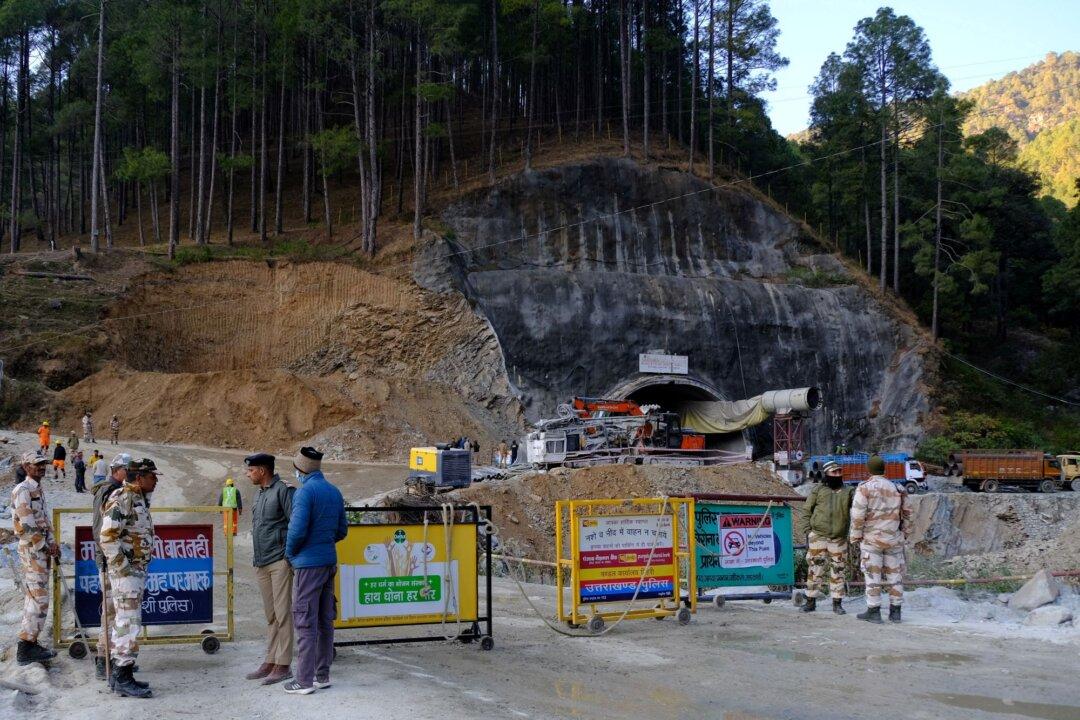SILKYARA, India—Rescuers trying to reach 40 workers trapped in a collapsed highway tunnel in the Indian Himalayas since last weekend suspended work temporarily on Friday due to a snag with their drilling machine, authorities said.
The men have been stuck in the hillside tunnel in Uttarakhand state since Sunday morning after it caved in.
They have light, receive oxygen, food, water, and medicines via a pipe, and talk by walkie-talkie. Though officials say they are fine, families are waiting anxiously, some camped outside.
Efforts to reach them were slowed by falling debris during drilling and a new machine flown from New Delhi began work on Thursday with the intention of creating space to push through pipes for the men to crawl to safety.
Pipes had been pushed for 22 metres (72 feet)—about one-third of the way—when there was a snag on Friday afternoon, said the state-run National Highways and Infrastructure Development Corporation (NHIDCL), which is building the tunnel.
“The machine is not able to push further as the machine is getting lifted” and its bearings are getting damaged, the statement said, adding that work was on to anchor the machine to the platform.
Engineers at the site are fabricating spare bearings to start it again, NHIDCL director Anshu Manish Khalkho told Reuters.
Chief medical officer of the district, R.C.S. Pawar, said the temperature inside the tunnel is higher than outside and there have been no complaints by the men of feeling cold.
Night temperatures have fallen to 13 degrees Celsius (55°F) as winter sets in.
The 4.5 km (3 mile) tunnel is part of the Char Dham highway, one of the most ambitious projects of Prime Minister Narendra Modi’s government.
Authorities have not said what caused the tunnel to cave in but the region is prone to landslides, earthquakes, and floods.
Arnold Dix, the Australia-based president of the International Tunneling and Underground Space Association, who is among experts being consulted by rescuers, said it was essential to take time and care.
“We cannot go fast and risk a second disaster,” he told Reuters. “This situation is extremely dangerous and we must be extremely careful.”







